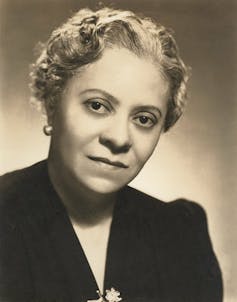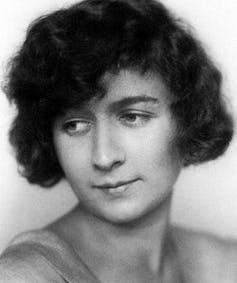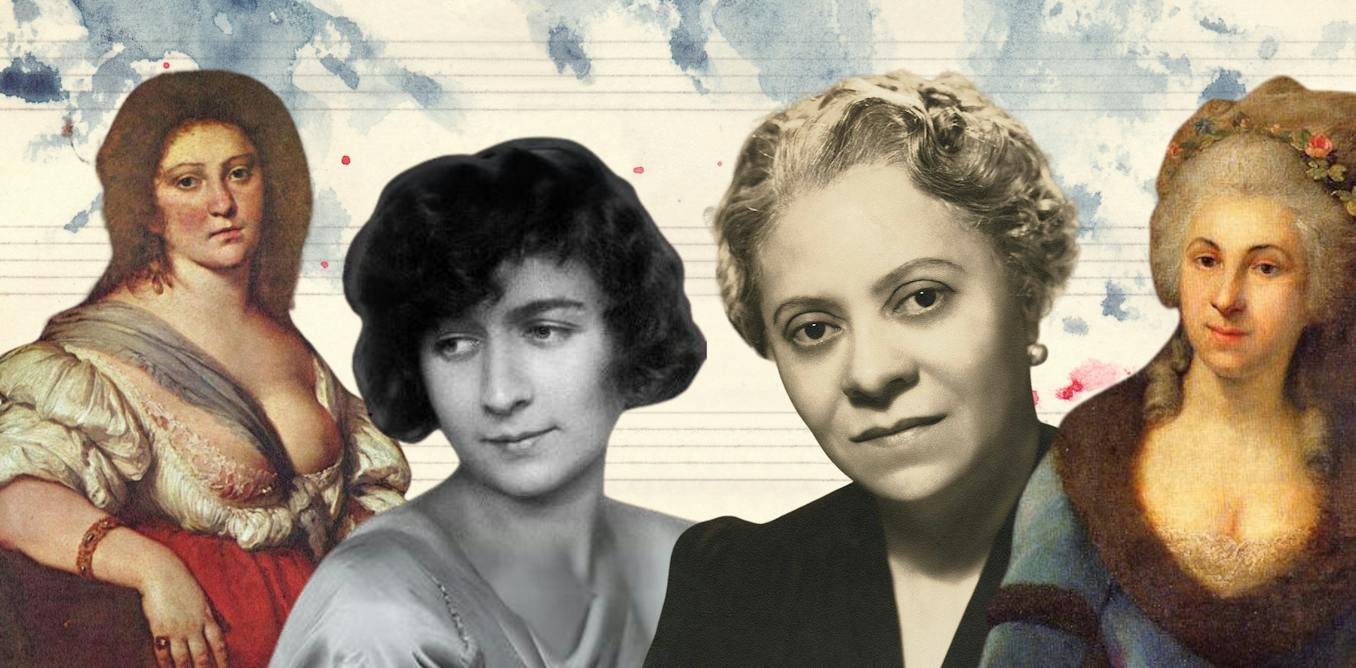I research female composers and contrary to what many people expect, women have successfully written music throughout history. It is important to learn about these musicians to undermine the idea of an exclusively white and male canon of western classical music. To start you on your journey of discovery, here are five female composers from history I recommend listening to.
1. Barbara Strozzi (1619-1677)
Gemäldegalerie Alte Meister
Born in Venice, the Italian baroque composer Barbara Strozzi is widely agreed to have been the most productive and successful composer (of any gender) of non-religious vocal music in mid-17th century Venice.
Seven of her eight published volumes contained secular, rather than sacral, vocal music, such as madrigals, arias and cantatas – the popular vocal genres of the time.
Most other composers, and certainly the other better-known female composers at the time, were generally associated with aristocratic courts or Christian religious institutions. For instance, Francesca Caccini was active at the Medici court and Isabella Leonarda composed for a convent in Novara, in northern Italy. Strozzi was one of the few who was active as a composer independent of either.
2. Marianna Martines (1744-1812)

Haydn-Haus
A multitalented woman, Marianna Martines was a highly regarded pianist, singer, composer and, later in life, teacher in 18th-century Vienna.
Her mentor and (after her biological father had passed away when she was around 20) substitute father was the imperial court poet and librettist Pietro Metastasio.
Her compositions range from sprightly virtuosic keyboard compositions and collections of arias to large choral and orchestral works, including several masses and two oratorios. Her abilities as a composer were such that she was the first woman ever admitted to the Accademia Filarmonica di Bologna in 1773 – one of the highest honours that could be bestowed upon a composer at the time.
3. Josepha Barbara von Auernhammer (1758-1820)
Josepha Barbara von Auernhammer was an Austrian composer and keyboardist. A student of Wolfgang Amadeus Mozart, her ambition was to pursue an international career as a performer. She ended up staying in Vienna, probably because of her marriage to an Austrian municipal councillor, though she continued to perform locally in the city’s most famous concert halls.
She published a lot of her music during her life. This was remarkable regardless of her gender, because in 18th-century Vienna very little music was printed. When the English composer Charles Burney visited Vienna, he commented on the steep prices of copyists, noting that: “Everything is very dear at Vienna, and nothing more so than music, of which none is printed.”
Auernhammer’s compositions for piano – which she probably performed herself – give us an idea of the remarkable keyboard skills she must have possessed. They are very virtuosic while simultaneously requiring delicate subtlety and expertly controlled touch, so much so that even her publisher noted that they would not recommend her pieces for beginners.
4. Florence Price (1887-1953)

University of Arkansas
Florence Price, a biracial musician from Little Rock, Arkansas, grew up in relative comfort. After a stint at the New England Conservatory of Music, she returned home to the deep south where racial segregation in public facilities was still mandated by law.
Escalating racial tensions and lynchings in Little Rock eventually led her and her family to join the “great migration” north in 1927. They settled in Chicago, as part of the black southern diaspora, where contributed hugely to the Chicago Black Renaissance through her work as a composer and educator.
At age 46, she won the Wanamaker Music Contest, founded by Rodman Wanamaker to provide “African-American composers with opportunities for greater recognition”. Among her approximately 300 works are many instrumental solo-pieces, as well as expansive orchestral works, such as concertos and symphonies.
5. Ilse Weber (1903-1944)
Ilse Weber was a Jewish children’s book author and poet from Czechoslovakia who set several of her texts to music. At age 39 she was sent to Theresienstadt – a concentration camp. She was murdered in Auschwitz in 1944.

City Hall of Ostrava
During her time in Theresienstadt, Weber volunteered in the paediatric infirmary, taking care of sick children. Lacking adequate medicine, she strove to comfort her patients in any way she could.
It was here that she wrote many of her songs, which she then played for and with the other interned members of the camp. She accompanied herself on a guitar that she had, illegally, managed to obtain. Weber used “deceptively simple” tunes and imagery to describe the horrors she and her fellow inmates witnessed, providing solace with music.

Looking for something good? Cut through the noise with a carefully curated selection of the latest releases, live events and exhibitions, straight to your inbox every fortnight, on Fridays. Sign up here.



